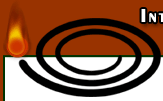






|
|
|||||

|

|

|

|

|
||
|
Ecotoxicology - Pesticide Classification - Insecticides
The current proliferation of chemical insecticides dates from World War II, until this time the insecticides available were based on: arsenicals, petroleum oils, sulfur, hydrogen cyanide gas, cryolite and on extracts from plants such as pyrethrum, nicotine and rotenone. Table 2: Classification of Insectides gives a summary of the main chemical classes of insecticide and the main chemicals in each class. The characteristics of the main classes of insecticide: the organochlorines, organophosphates, carbamates and pyrethroids are summarised below. Organochlorines DDT and related compounds including rhothane (DDD) and methoxychlor. chlorinated cyclodiene insecticides such as aldrin, dieldrin and heptachlor. hexachlorocyclohexanes (HCHs), such as lindane. Organochlorine insecticides are very stable solids with: limited vapour pressure, very low water solubility and high lipophilicity. They may be very persistent in their original form or as stable metabolites. They tend to be stored in body fats and are particularly hazardous because they are so stable and tend to accumulate in successive organisms in the food chain. DDT and the HCHs a regarded as only moderately toxic to mammals while the chlorinated cyclodienes are highly toxic. Action: all organochlorine insecticides are nerve poisons but DDT has a different action to the chlorinated cyclodienes and HCHs. DDT acts on the sodium channels in the nervous system so that the passage of an 'action potential' along the nerve is disrupted. It causes uncontrolled repetitive spontaneous discharges along the nerve. Uncoordinated muscle tremors and twitches are characteristic symptoms. The chlorinated cyclodienes and HCHs act on the GABA receptors which function as a channel for Cl - ions through the nerve membranes. They bind to the GABA receptors and reduce the flow of Cl - ions. Typical symptoms include convulsions. Organophosphates They are mostly liquids, liphophilic, with some volatility and a few are solids. Generally, they are less stable and more readily broken down than organochlorines and are relatively short-lived in the environment, hence most of their hazard is associated with short-term (acute) toxicity. The water solubility of the various organophosphate compounds is very variable and they are prepared in numerous formulations: as emulsifiable concentrates for spraying and to control ectoparasites of farm animals (particularly sheep dips) and sometimes internal parasites (such as ox warble fly); as seed dressings and as granular formulations particularly used for the most toxic organophosphates (e.g. disyston and phorate) as the active ingredient is effectively 'locked up' in the granule and is safer to handle and only slowly released into the environment. Organophosphates are also used to control vertebrate pests such as Quelea in Africa. Action: like organochlorines, organophosphates also act as a neurotoxin. They combine with the enzyme acetylcholinesterase and prevent conduction of nerve impulses at junctions in the nervous system where acetylcholine is the natural transmitter. As a result, acetylcholine builds up in the nerve synapse and eventually leads to synaptic block when the acetylcholine can no longer relay signals across the synapse. In neuro-muscle junctions this leads to tetanus, the muscle is in a fixed state, unable to contract or relax in response to nerve stimulation. Carbamates Carbamates are mainly used to control insect pests in agriculture and horticulture, they have abroad spectrum of activity and usually act by contact or stomach action although a few possess systemic activity (aldicarb, carbofuran). Action: basically the same as organophosphates, inhibiting the action of acetylcholine at the nerve synapses. Doses of carbamates are not accumulative and carbamate poisoning is more easy to reverse than that caused by organophosphates. They are generally regarded as representing a short-term hazard. Pyrethroids Overall, most pyrethroids are not sufficiently soluble in water to be used a systemic insecticides. They are mainly formulated as emulsifiable concentrates for spraying. They control a wide range of agricultural and horticultural insect pests and are used extensively to control insect vectors of disease (e.g. tsetse fly in Africa) Action: pyrethroids are generally solids with very low water solubility and they act as neruotoxins in a very similar way to DDT. They are readily biodegradable but can bind to particles in soils and sediments and can be persistent in these locations. They are particularly toxic to insects as opposed to mammals and birds and the main environmental concerns are over their effects on fish and non-target invertebrates. Table 2: Classification of Insecticides
|
||||||||||||||||||||||||||||||||||||||||||||||||||||||||||||||||||||||||||||||||||||||||||||||||||||||||||||||||||||||||||||||||||||||||||||||||||||||||||||||||||||||||||||||||||||||||||||||||||||||
|
|